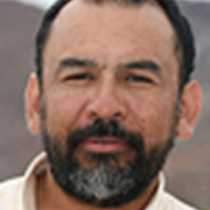San Jose and San Francisco Islands, Baja California Sur
The Vermilion Sea or Mar de Cortes is sometimes gentle with ships and people. This morning it was so. We woke up on a calm ocean, flat and bright as a mirror, whilst the ship navigated slowly and softly to the beautiful island of San Francisco, a few miles offshore the peninsula of Baja California.
Right after breakfast we loaded our Zodiacs for cruises in the mangroves. As the temperature rose and the sun became a ball of fire high in the sky, the red mangrove leaves turned into a deep solid green because of the reflection of light. A few minutes later, as the tide reached its highest level and navigation was easy, we had the first introduction to this interesting plant community: from our naturalist we learned how the plants deal with salt and oxygenation, how they produce huge amounts of biomass and how they stabilize the soil, among other issues. We also were able to see some interesting birds, like the reddish and snowy egrets in their statue-like poses, a nervous belted kingfisher, the elusive mangrove warbler and its cousin the orange-crowned warbler, phlegmatic white ibis and other. In the water, because of the good visibility, we saw different types of fishes, but the highlights of the marine life were many jellyfish lying upside down, allowing their symbiotic algae to be exposed to the sunlight. As these symbionts photosynthesize, the surplus energy is passed to the host jelly, in what we considered the smartest and cheapest way to get fuel from others.
Later, we left the mangroves of Isla San Jose in navigation to our next destination, the island of San Francisco. There, once anchored, we set up our toys (the kayaks) and organized different hikes on its flat valley. Kayaking was fantastic as we had the chance to approach the eroded rocky slopes of the island, and observed gulls and brown pelicans perching there. Also, we saw an osprey flying from one cliff to another. The hikes were very good since we saw prickly pears, galloping cacti, leather plants and some morning glories and saltbush decorated with their beautiful flowers. The little and endemic mesquite-like brushes called frijolillos or Desmanthus (“little beans”) were seen producing hundreds of papery seedpods. Most of us hiked to the northeastern side of the island for tide pooling. Again, many marine creatures were observed while our undersea specialist talked about their natural history.
On the same beach, once showered and dressed, we had a well-deserved barbecue around a bonfire. Some stories about Mexico followed as the sun sank behind the Sierra de la Giganta.
The Vermilion Sea or Mar de Cortes is sometimes gentle with ships and people. This morning it was so. We woke up on a calm ocean, flat and bright as a mirror, whilst the ship navigated slowly and softly to the beautiful island of San Francisco, a few miles offshore the peninsula of Baja California.
Right after breakfast we loaded our Zodiacs for cruises in the mangroves. As the temperature rose and the sun became a ball of fire high in the sky, the red mangrove leaves turned into a deep solid green because of the reflection of light. A few minutes later, as the tide reached its highest level and navigation was easy, we had the first introduction to this interesting plant community: from our naturalist we learned how the plants deal with salt and oxygenation, how they produce huge amounts of biomass and how they stabilize the soil, among other issues. We also were able to see some interesting birds, like the reddish and snowy egrets in their statue-like poses, a nervous belted kingfisher, the elusive mangrove warbler and its cousin the orange-crowned warbler, phlegmatic white ibis and other. In the water, because of the good visibility, we saw different types of fishes, but the highlights of the marine life were many jellyfish lying upside down, allowing their symbiotic algae to be exposed to the sunlight. As these symbionts photosynthesize, the surplus energy is passed to the host jelly, in what we considered the smartest and cheapest way to get fuel from others.
Later, we left the mangroves of Isla San Jose in navigation to our next destination, the island of San Francisco. There, once anchored, we set up our toys (the kayaks) and organized different hikes on its flat valley. Kayaking was fantastic as we had the chance to approach the eroded rocky slopes of the island, and observed gulls and brown pelicans perching there. Also, we saw an osprey flying from one cliff to another. The hikes were very good since we saw prickly pears, galloping cacti, leather plants and some morning glories and saltbush decorated with their beautiful flowers. The little and endemic mesquite-like brushes called frijolillos or Desmanthus (“little beans”) were seen producing hundreds of papery seedpods. Most of us hiked to the northeastern side of the island for tide pooling. Again, many marine creatures were observed while our undersea specialist talked about their natural history.
On the same beach, once showered and dressed, we had a well-deserved barbecue around a bonfire. Some stories about Mexico followed as the sun sank behind the Sierra de la Giganta.




